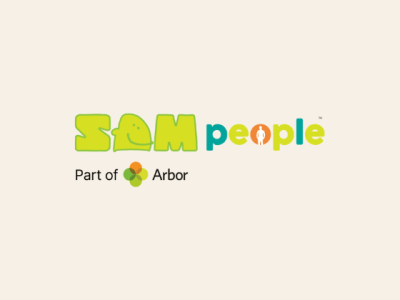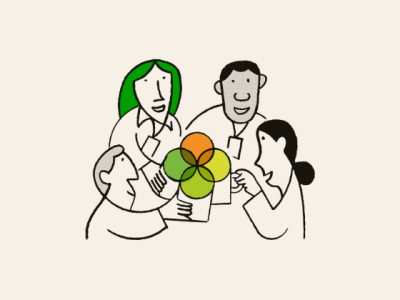This is the final blog in our series offering a new vision for MATs. With a clear vision, based on 6 powerful principles and the development of 6 core competencies, and MAT-wide systems and cultures already put in place, the main focus should be on the systematic development of collaboration.
Management style: collaboration
Overview
MATs which have achieved the integration above quickly realise that “you can’t mandate greatness”. Alignment and standardisation risk killing innovation and engagement. Arbor Education refers to this next phase as an ‘Assistant MAT’, Dixons Academies uses the term ‘Agile’ with ‘High autonomy, high alignment’
MATs at this stage are also well placed to collaborate beyond the MAT itself, contributing to a self-improving Academy system which is led from the middle.
If the work of Stage 2 has already been done, then the underpinning capabilities of Support, Learn, Assess and Communicate are also in place, and will be refined and improved through collaboration.
The emphasis now is on building systems, processes and policies to support purposeful collaboration. This supports the growth of teams which are focused on improvement, allowing experiments to be tried out, collaboration to grow. Management must support individuals and teams to be highly aligned to the vision, and then encourage groups which will self-identify and form to tackle a problem.
David Ross Education Trust operate a ‘Team around the school’ where supporting functions meet with the Principal to fix issues and plan for the future.
The Inspiration Trust employ Subject Specialist Leaders’ whose role is to develop Subject Communities, which variously focus on Assessment, Materials and Curriculum resources.
Dixons adopt the ‘Agile’ approach used by Spotify, of ‘Squads’ (a group of people who have decided to work together on a common challenge, e.g. learning and teaching of a particular subject and phase),‘Tribes’ (a group of ‘squads’ working on adjacent challenges who can benefit from sharing), Chapters (functional experts who bring different competencies to the squad), Product Leads (the owner of the particular challenge), and ‘Agile Coaches’ (senior leadership whose role is not to direct, but to coach the teams to help them achieve). In this model, Squads will form and finish based on the need to tackle a particular challenge.
By this stage I assume a strong IT platform is in place to act as infrastructure for effective collaboration. In particular a strong IT platform will allow sufficient bandwidth and flexibility for anytime/ anywhere collaboration to be supported.
Benefits
The benefits of moving from Growth Stage 1 to 2 are well-documented and relate to traditional measures such as:
1. Economy – getting more for your money by planning ahead
2. Efficiency – the avoidance of wasted time and cash, the ability to buy at scale, reduced complexity; and
3. Effectiveness – improved systems and structures which allow people to do their job better, and retain staff as a result of less stress.
The important benefit of growth stage 3 is to foster…
Engagement. Empowered teams, aligned by systems, processes and vision, but free to develop their own groups and solutions, have the potential to be at the heart of taking the Academy system forwards.
It is tempting to jump from Stage 1 of MAT growth to Stage 3, missing out the detailed and difficult work of Stage 2. I believe this would be a mistake, as without a strong underpinning, it is difficult for a large group of Academies to collaborate effectively. I encourage you to stick with it as the benefits of getting this right are significant:
- Releasing Principals to refocus on T&L through improved operations
- Curriculum and assessment improvements through collaborative research & cross MAT roles
- Teaching and learning improvements through improved use of data, CPD, shared subject appointments
- Workforce improvements in terms of recruitment, retention, leadership support & career progression
- Principals experience strategic challenge, clearer direction of travel, purposeful accountability
- MAT to MAT support, provide the engine for a self-improving system, which is led from the middle and on a journey from ‘Good to Great’.







Leave a Reply